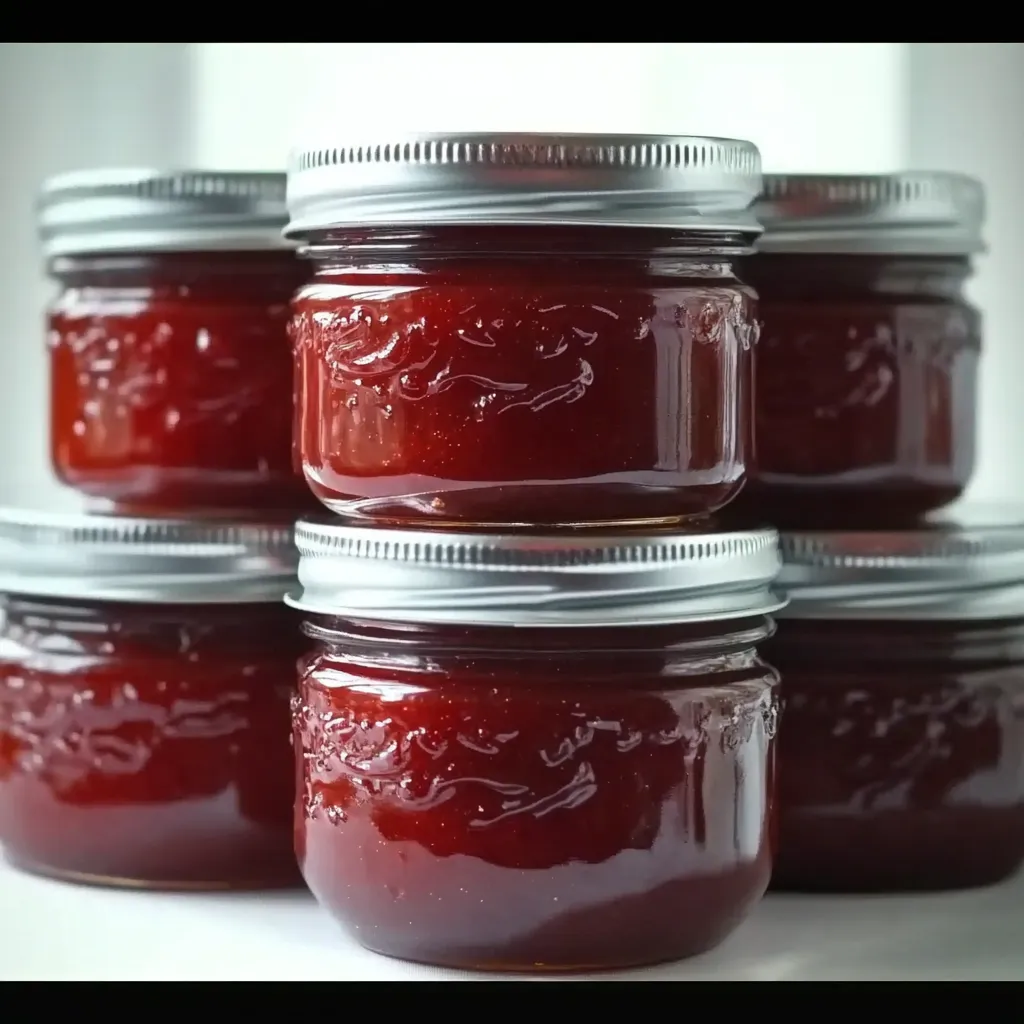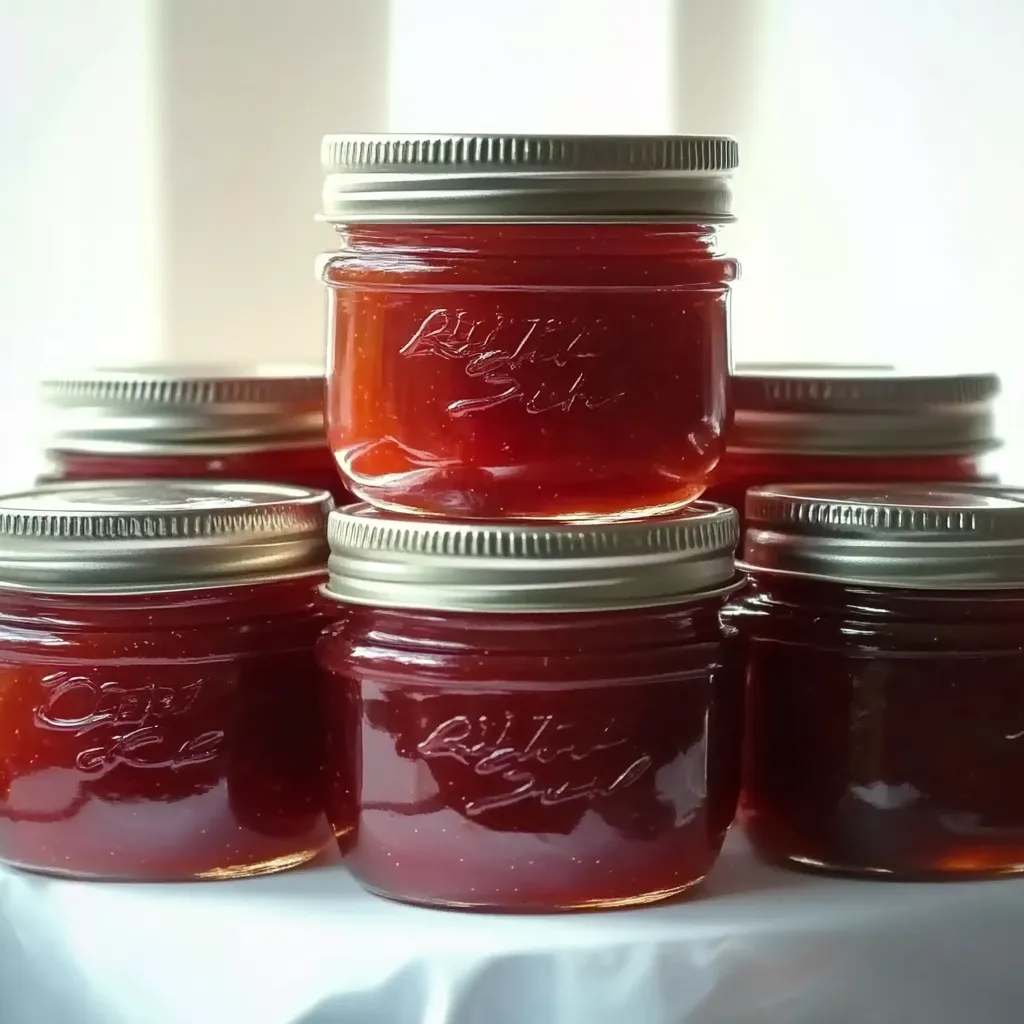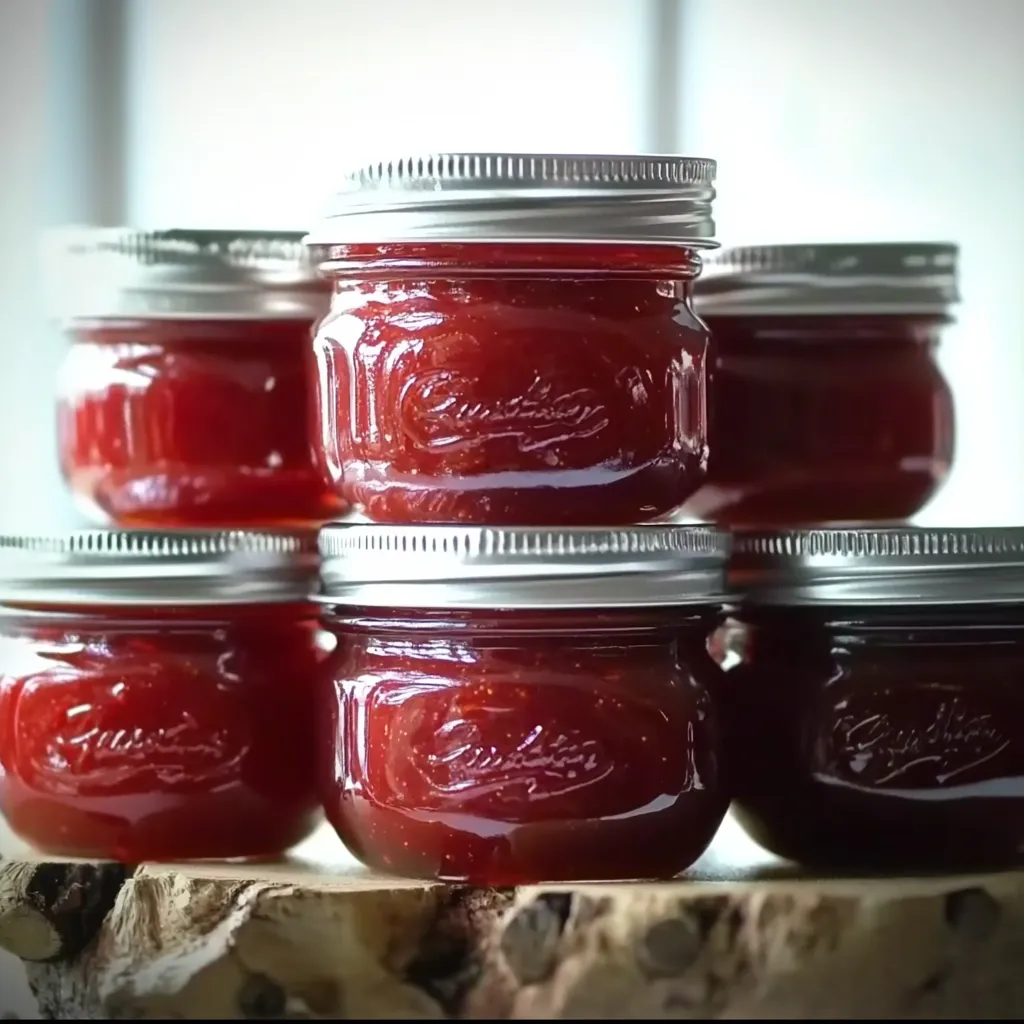 Pin it
Pin it
Rhubarb cinnamon jam is the kind of recipe that fills your kitchen with nostalgia. The tart bite of rhubarb meets cozy cinnamon in a sweet preserve that is perfect for toast or dolloping over yogurt. This is the jam I reach for all spring when I want a reminder of my grandmother’s garden harvest, simmering something bright and fragrant to tuck away for the months ahead.
The first time I made this jam I was amazed by how quickly the rhubarb broke down and how the cinnamon brought a gentle warmth to every spoonful. Now I gift these jars to neighbors every year and they disappear fast.
Ingredients
- Rhubarb: Chopped fresh is best for the brightest flavor; look for stalks that are crisp and a deep pink or red
- Water: Helps the rhubarb break down during the first cooking step; filtered water keeps the flavors clean
- Pectin: Using a standard box like Sure Jell ensures your jam sets up perfectly every time
- Butter: Helps reduce foaming for a smoother jam surface; use real butter
- Sugar: Regular granulated sugar brings out the rhubarb’s natural tartness; never skimp here, set the sweetness and helps the jam gel
- Lemon juice: Balances the flavor and aids in proper gelling; always use freshly squeezed for best results
- Cinnamon: Choose a good quality ground cinnamon for a warm undertone; it is the secret to the jam’s unique character
Step-by-Step Instructions
- Prepare the Equipment:
- Wash your jars and screw bands in hot soapy water, then rinse well with warm water. Lay your flat lids in a saucepan and cover with boiling water so they soften and are ready for sealing later. Drain everything thoroughly before filling.
- Cook the Rhubarb:
- Place the chopped rhubarb in a large saucepan with water. Bring it to a full boil over high heat. Once boiling, reduce heat and simmer for two to three minutes. Watch the rhubarb closely as it rapidly begins to soften and collapse into a chunky sauce.
- Measure the Cooked Rhubarb:
- Carefully measure out four and one half cups of the tender rhubarb mixture. Using a correct measurement ensures the jam sets and flavors balance as intended.
- Combine with Pectin and Lemon:
- Pour the rhubarb into your canning pot or Dutch oven. Slowly stir in the entire packet of pectin and add lemon juice. Drop in the butter to keep foaming in check. Stir and bring everything up to a full rolling boil over high heat. Continue stirring so the pectin mixes in thoroughly.
- Add Sugar and Cinnamon:
- Gradually stir in the sugar followed by the cinnamon. Stir constantly so the jam does not stick or burn on the pot bottom. Once everything is dissolved, bring it back to a strong boil for exactly one minute. The mixture will look glossy and begin to thicken quickly.
- Finish and Skim:
- Take the pot off the heat. Immediately skim off any foam with a spoon for a crystal clear finish.
- Fill and Seal Jars:
- Ladle the hot jam into clean, warm jars leaving about one quarter inch of space at the top. Wipe the rims and threads with a damp towel for a tight seal. Top with the prepared lids and screw on the bands just until snug.
- Process the Jars:
- Place filled jars on the rack in your canner so they are covered with at least one inch of water. Bring the water back to a gentle boil and process the jars for ten minutes. Remove with tongs and let jars cool undisturbed on a towel.
- Test the Seal:
- After jars cool, press gently on the center of each lid. A firm, taut lid means your jar is safely sealed. Any that pop back should be chilled and enjoyed right away.
 Pin it
Pin it
Cinnamon has always been the ingredient that takes this jam from good to great. I love how it perfumes the whole kitchen and reminds me of the first time my mom handed me a still warm jar to swirl onto buttered toast for a spring breakfast.
Storage Tips
Store sealed jars of jam in a cool dry cupboard and avoid direct sunlight for best color and flavor. Once opened, refrigerate and use within three weeks. If you ever have a jar that does not seal, get it into the fridge and use within a month to prevent spoilage.
Ingredient Substitutions
If rhubarb is looking pale or sparse at the market you can add a cup of chopped strawberries for color and sweetness without upsetting the set. Powdered lemon juice works in a pinch, but fresh is best for flavor and pectin reaction. For a spicier twist, try a little ground ginger with the cinnamon.
Serving Suggestions
This jam is versatile. Spread it generously over buttered croissants or swirl into Greek yogurt for a breakfast treat. Layer spoonfuls over pound cake or use as a filling for sandwich cookies or thumbprints. I keep a small jar ready for cheese boards where the tart flavor really shines.
Rhubarb jam is a classic in northern gardens where spring stocks are plentiful. Before sugar was widely available, people used honey or even apple juice to tame the sourness in preserves. Adding cinnamon is a more modern twist that pairs with rhubarb’s nature and roots the jam in cozy home baking traditions.
 Pin it
Pin it
Each time I make this recipe I remember my grandmother’s wooden spoon and the way we used to listen for the satisfying pop of lids cooling after a busy canning day. That sound tells you the effort was worth it and you have jars of spring’s tangy sweetness to enjoy whenever you like.
Frequently Asked Questions
- → What type of rhubarb works best?
Fresh, crisp rhubarb stalks are best, but both red and green varieties will deliver tangy flavor and good texture.
- → Why add butter during cooking?
Butter helps reduce the foamy bubbles that form during boiling, making the final preserve clearer and easier to jar.
- → How do I know the jam is ready for canning?
When the mixture reaches a full rolling boil and is thickened, it's ready to be ladled into prepared jars for processing.
- → How do I check if my jars have sealed?
Once cooled, press the lid's center. If it doesn't pop up or move, the seal is tight. Unsealed jars should be stored refrigerated.
- → Can I adjust the cinnamon or sugar?
Cinnamon can be increased or decreased for taste. Altering sugar may affect texture and shelf stability, so adjust with care.
